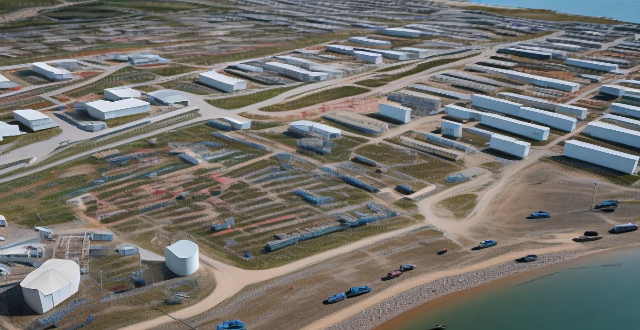Marine protected areas (MPAs) are crucial for preserving marine biodiversity by regulating human activities, providing habitats for thriving ecosystems, enhancing scientific research, supporting sustainable use, building resilience against climate change, educating and raising awareness, and facilitating ecosystem recovery.

How Marine Protected Areas (MPAs) Help in Preserving Marine Biodiversity
Marine protected areas (MPAs) play a crucial role in the conservation of marine biodiversity. These designated zones aim to safeguard the natural environment and its inhabitants from harmful human activities. Here's how MPAs contribute to preserving marine life:
Regulating Human Activities
- Limiting Overfishing: By restricting or prohibiting fishing within their boundaries, MPAs give overexploited species a chance to recover and thrive.
- Curbing Destructive Practices: Certain practices like bottom trawling and dredging are banned or limited, preventing habitat destruction.
Providing Habitats for Thriving Ecosystems
- Sanctuaries for Key Species: MPAs often serve as havens for endangered or threatened species, ensuring their survival.
- Maintaining Biodiversity Hotspots: Areas with high biodiversity are protected, maintaining the health and resilience of ecosystems.
Enhancing Scientific Research
- Baseline Data Collection: MPAs provide controlled environments for monitoring ecological changes and collecting data on species behavior and population dynamics.
- Testing Hypotheses: Scientists can study the effects of protection on marine life without external disturbances.
Supporting Sustainable Use
- Sustainable Fishing Practices: Some MPAs allow sustainable fishing methods, promoting eco-friendly techniques that do not harm the ecosystem.
- Ecotourism Opportunities: Well-managed MPAs attract tourists, providing economic benefits while educating them about marine conservation.
Building Resilience Against Climate Change
- Buffering Ocean Acidification: Healthy ecosystems within MPAs can mitigate the impacts of ocean acidification.
- Adaptation and Migration: Protected habitats serve as stepping stones for species migrating due to changing sea temperatures.
Educating and Raising Awareness
- Community Engagement: Involving local communities in managing MPAs fosters a sense of ownership and responsibility for marine conservation.
- Public Outreach Programs: Educational programs increase public awareness about the importance of marine biodiversity and the role of MPAs.
Facilitating Ecosystem Recovery
- Recovery from Past Damages: Areas that have suffered from pollution or habitat loss have the potential to rebound when protected.
- Regeneration of Sensitive Habitats: MPAs allow sensitive habitats like coral reefs and seagrass beds to regenerate naturally.
By establishing and effectively managing marine protected areas, we can ensure that our oceans remain vibrant repositories of life, capable of sustaining the myriad creatures that call them home. It's an investment in the future, ensuring that marine biodiversity endures for generations to come.